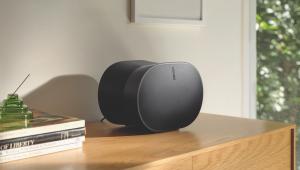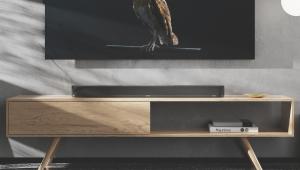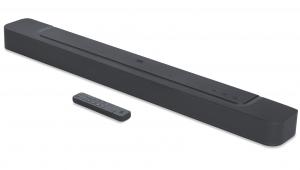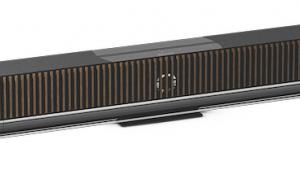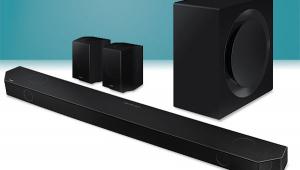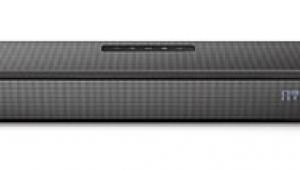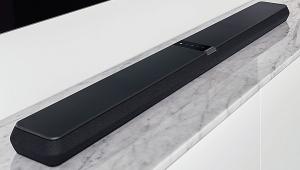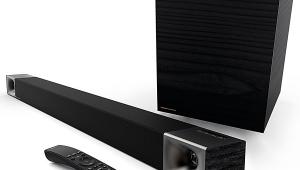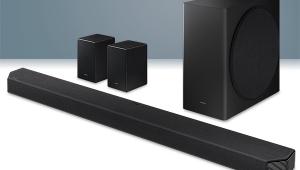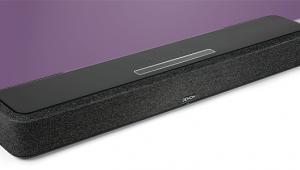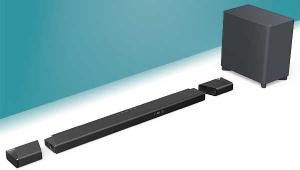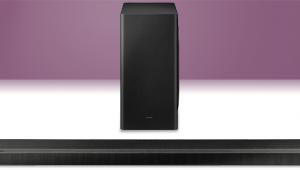Philips Fidelio E5 review
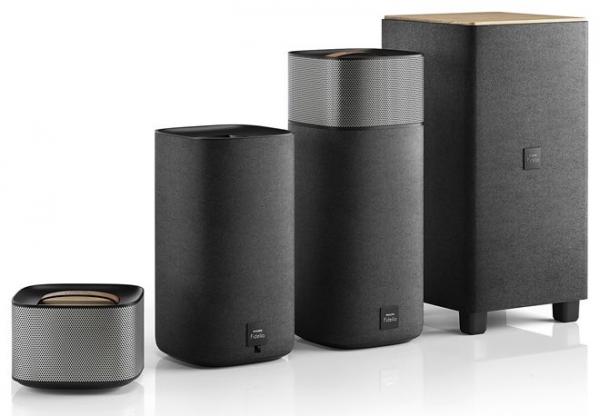
 Philips has always been a company known for its innovative ethos. And that still remains, despite the CE aspects of the brand now being split between two separate entities (TP Vision for TVs, Woox Innovations for audio, recently acquired by Gibson). The former still advocates Ambilight technologies and potent processing, while the latter has been attacking the domestic audio market with some neat ideas, under the Fidelio umbrella.
Philips has always been a company known for its innovative ethos. And that still remains, despite the CE aspects of the brand now being split between two separate entities (TP Vision for TVs, Woox Innovations for audio, recently acquired by Gibson). The former still advocates Ambilight technologies and potent processing, while the latter has been attacking the domestic audio market with some neat ideas, under the Fidelio umbrella.
Last year it released some highly-impressive open-backed headphones (the X1s) and its shape-shifting HTL9100 soundbar. The E5 system reviewed here is similar to that 'bar, in that it provides wireless surround audio from a flexible design.
The E5 is described as a 2.1 package, but it is more than just a bunch of speakers. Onboard amplification, to the tune of 210W, is joined by 2-in, 1-out HDMI connectivity and aptX Bluetooth provision, making it a versatile proposition in terms of external sources.
Build quality and design generally impress, although with a £600 asking price I expect them to. The two stereo speakers are clad in a cloth wrap, adorned with the Fidelio logo, and stand 400mm tall. This is probably larger than you might imagine – way chunkier than most 'satellite' speakers and more suited, aesthetically, to TV screens around the 50in mark than a 32in/37in. The edges of the cabinets are gently curved and each seems a little lightweight (4kg) considering their dimensions. Still, in comparison to a speaker from a typical mass market all-in-one array, they look and feel suitably premium.
The stereo speakers are actually made of two separate units – and this is where the E5's flexibility comes into play. The upper section, with its real-wood top-plate and carry handle, can be disconnected from the bottom part (simply by lifting it off) and placed anywhere in your room while still disgorging audio. No cables are required – it packs an onboard battery that charges when connected to the main speaker. The result is a 4.1 package, providing you can find somewhere to house the surround modules (many people will simply plonk them on the back of the sofa...) and remember to replenish their batteries when not in use.
Easy installationInstallation is a matter of plugging in the right speaker, connecting this to the left speaker via the supplied cable (which is a decent length, enabling a wide stereo image) and hitting the 'on' button on the remote. The subwoofer connects wirelessly (a magic trick I never tire of) and you're ready to rock.
Well, almost. Philips has adopted a colour LED status system, and the LEDs are tiny, peeking out from behind the grilles of the right speaker and subwoofer, and you'll have to resort to the manual (which isn't great) to learn the differences between a blinking blue and a steady orange.
Initially, I paired the E5s via Bluetooth to my Mac, listening to a swathe of M4A files in straight 2.1 configuration. Manual adjustment extends to just treble and bass controls, and I had to resort to the latter, as with Robert Palmer's Sneakin' Sally Through The Alley, the subwoofer seemed to be barely making an impact. With that resolved, the E5s showed an appealing performance. The rear-ported sub (which uses a 6.5in driver) seemed happy placed in my room's corner, a little way out from the wall, and integrated nicely with the left/right pairing. Bass is neither overblown nor left wanting, with a warm, fulsome tone that gripped tightly onto the track's oh-so-funky basslines. On top of this, the mid-range proved equally syrupy, with Palmer's vocals given impressive body. Treble details, such as hi-hats, aren't ignored either, sounding only a touch splashy and indistinct compared to the tightness evidenced across the rest of the frequency range.
On to movies, and switching to multichannel mode with the Denzel Washington drama Flight, fed directly via HDMI as multichannel PCM from Panasonic's DMP-BDT700. Here, during the pivotal airplane sequence, the E5's subwoofer again proves its chops, tracking the throbbing jet engines with depth and control. In fact, any worries that the woofer would work best with music material are quickly assuaged – with the volume cranked up (and the Philips goes loud by the way), the sub offers real presence, with bass effects you can feel.
The surround speakers do their job well. As with the HTL9100, an obvious criticism is that the single 2.5in full-range driver lacks heft, but they still output atmospheric effects with urgency and provide useful backup to the front soundstage when Alan Silvestri's orchestral score comes into play.
Yet perhaps a soundbar's most important aspect is its dialogue clarity – after all, this 2.1 package will be expected to cater for soap operas as well as action adventures. And the E5 nails it, with a distinct 'centre channel' hanging between the two stereo speakers that lifts voices to the fore.
With its flexible setup, crowd-pleasing sonics and living-room looks, I can't imagine any buyer of the Fidelio E5 being disappointed. Control/operation could be sleeker, but everything else here is hunky-dory.
Philips Fidelio E5, £600, www.philips.co.uk
 |
Home Cinema Choice #351 is on sale now, featuring: Samsung S95D flagship OLED TV; Ascendo loudspeakers; Pioneer VSA-LX805 AV receiver; UST projector roundup; 2024’s summer movies; Conan 4K; and more
|



